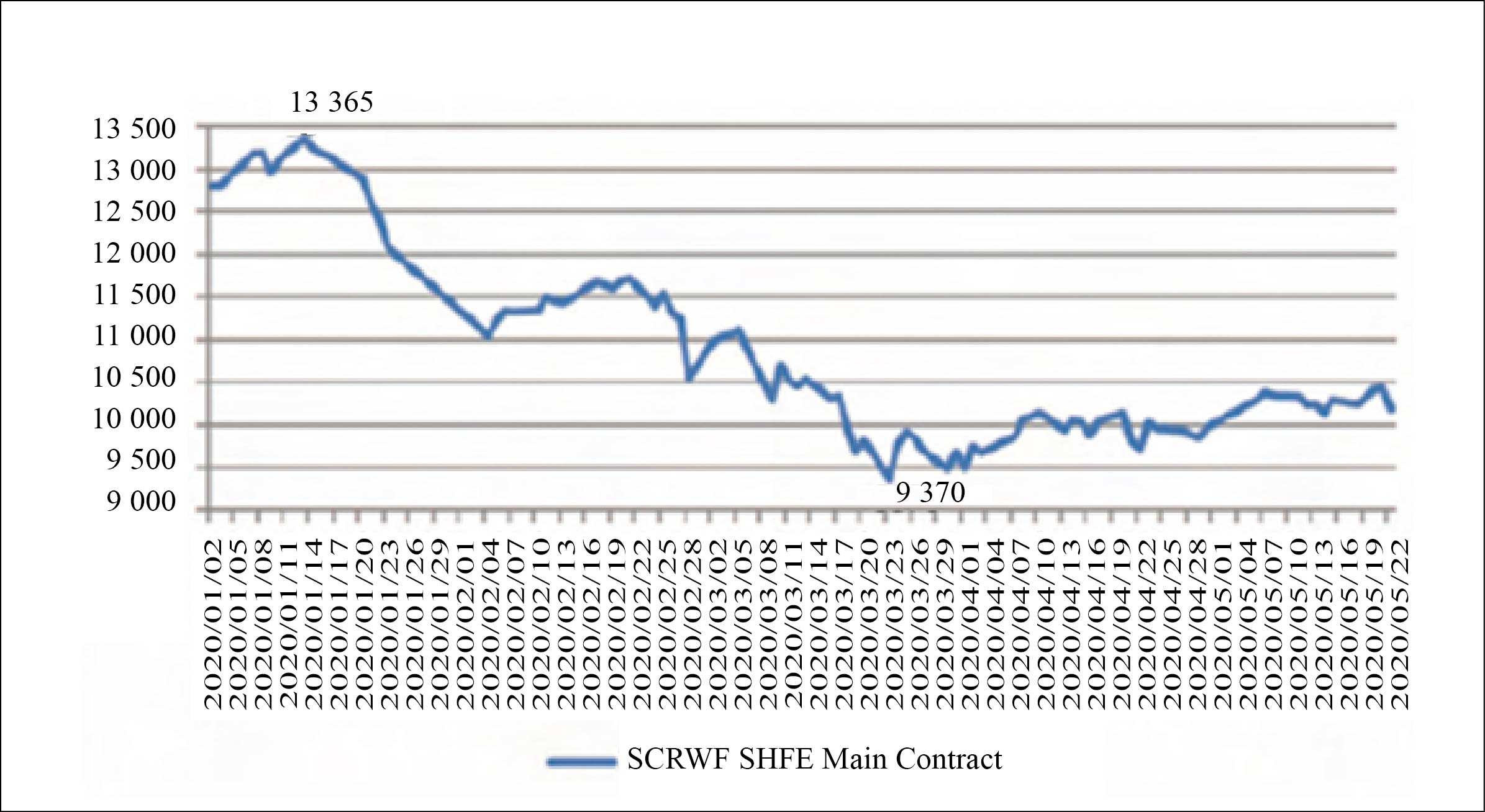By Xie Yinli, Sinopec Chemical Commercial Holding Company East China Branch
Since late January: SBR industry battered, with prices slumping
The coronavirus outbreak hindered production resumption along the whole industrial chain. Lack of carbon black, steel cord and zinc oxide weighed on downstream production, slashing demand for styrene butadiene rubber (SBR). During the suspension of downstream operations, most domestic SBR plants maintained relatively high run rate, except Zhejiang Weitai Rubber, which carried out a temporary shutdown on January 16. Hence, SBR inventories piled up, triggering price slumps. As shown in Figure 1, which displays SBR 1502 prices so far in 2020, domestic SBR prices slipped from RMB11 100/t in January to RMB7 700/t in early April, down by 30% during the period.

Figure 1 China’s SBR 1502 prices in 2020 (RMB/t)
Major feedstock butadiene (BD) producers maintained relatively high operating rates during the pandemic. Shrinking demand and restricted transport resulted in a rapid build-up in BD inventories. In December 2019, China imported 52 662 tons of BD and the volume increased to 103 000 tons in the first quarter of 2020, up by 12.49% year on year. From January to early April, domestic BD prices plunged by nearly 60%, from RMB8 500/t to RMB3 500/t. Figure 2 shows China’s BD prices so far in 2020.

Figure 2 China’s BD prices in 2020 (RMB/t)
Demand concerns for the first quarter of 2020 amid the spreading pandemic dragged down Tokyo and Singapore natural rubber futures during China’s Lunar New Year. Prices on the Shanghai Futures Exchange (SHFE) plummeted by over RMB1 000/t after re-opened in early February. Figure 3 shows natural rubber prices so far in 2020. Main contract prices plunged from the January peak at RMB13 365/t to RMB9 370/t on March 23, down by nearly 30%.

Figure 3 Natural rubber main contract prices in 2020 (RMB/t)
May-June: Surging import volume worsening supply-demand contradictions
SBR price plunges hit China in March and overseas countries in April. Import prices for SBR 1502 began to fall from US$1 350/t in January. Dramatic price declines emerged in major import origins, including Russia, South Korea and Poland in early April, sending China to become the highest-priced market with best demand. Import prices briefly dropped below US$800/t. Traders and end-users, including many tyre producers purchased May-July arrivals of imports. China imported 91 kt of SBR in the first quarter of 2020, up by 7.1% year on year and the volume is expected to surge in the second quarter.
Downstream tyre producers and major adhesive tape producers face heavy funding pressure after operation resumes. In March, some of them had overseas orders previously placed in January to fulfill but in April-March, overseas orders almost grinded to a halt, leaving them large build-up of finished products. On the other hand, end-users had increased purchases of feedstock synthetic rubber and natural rubber, which were priced at record low levels and this also occupied their capital. Domestic tyre demand began to pick up in April, but overseas demand, which accounted for 45% of the total, remained stagnant.
Feedstock BD costs set a new low at RMB3 000- 3 500/t in early April and then rebounded on rising run rates at synthetic rubber plants. Overseas BD prices plunged in April, with European prices once dipping to US$50/t FOB Rotterdam at the end of April, resulting in hefty volumes of outflows to China.
Q3 forecast: demand likely to recover, prices likely to rally
With the pandemic gradually coming under control across the globe, overall demand is likely to perk up in the third quarter of 2020. Inventories of finished products at domestic tyre and adhesive tape producers may be depleted, improving their cash flow. However, a full recovery in demand is expected to take longer.
The third quarter is likely to see a full economic recovery, as governments around the world began to release a series of financial, taxation and monetary policies to revive the industries. Continuous release of funds will prevent natural rubber futures from falling sharply, which will help stabilise SBR prices.
SBR inventories will keep mounting. But as SBR prices have retreated to the level of over a decade ago, speculation will arise with social funds flowing into the market, which will ease the supply-demand contradictions and raise the floor prices in a falling market. SBR prices are likely to rebound in the third quarter and the magnitude will highly rely on the recovery in the downstream export market, but a notable rally is of slim chance in 2020.